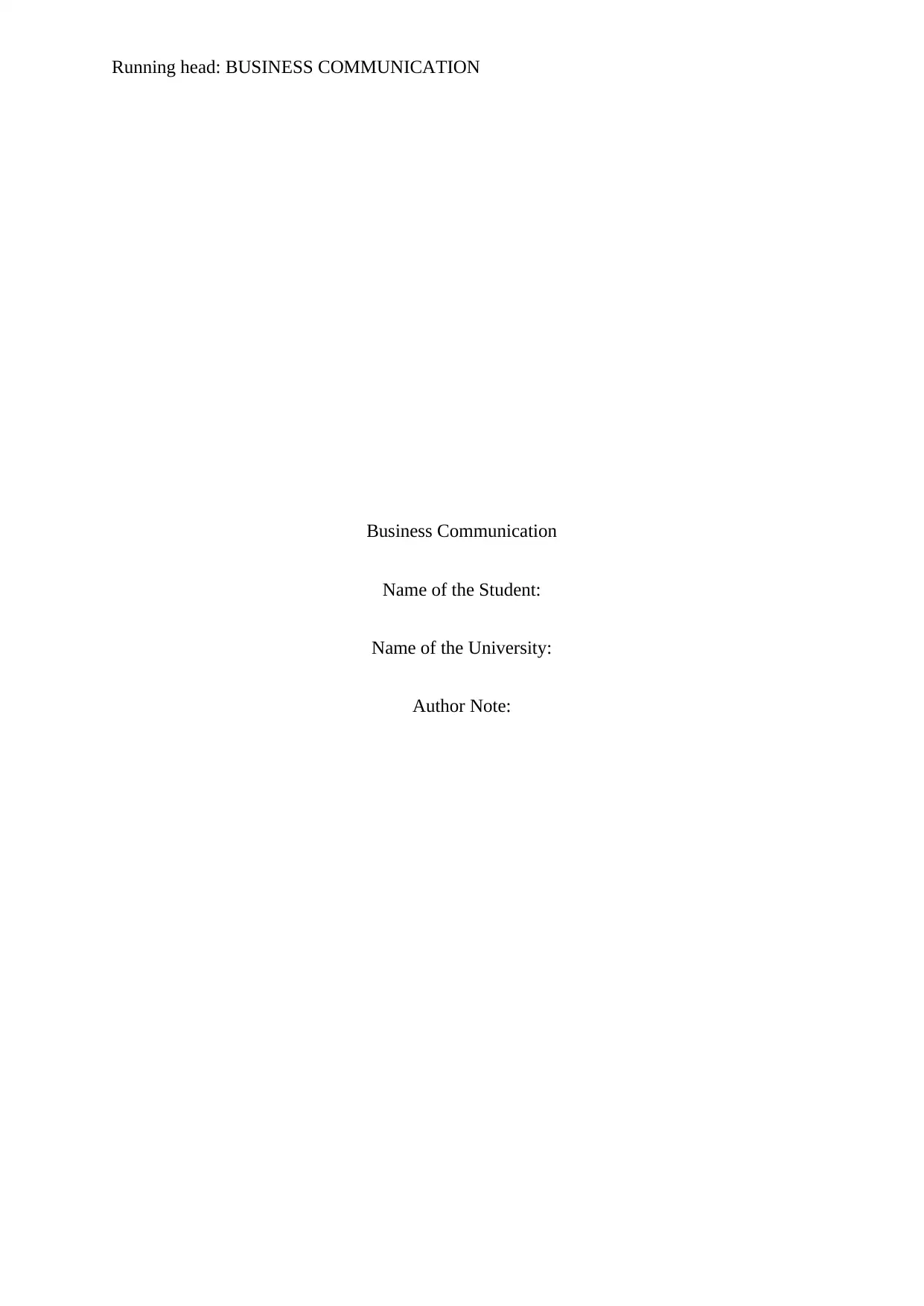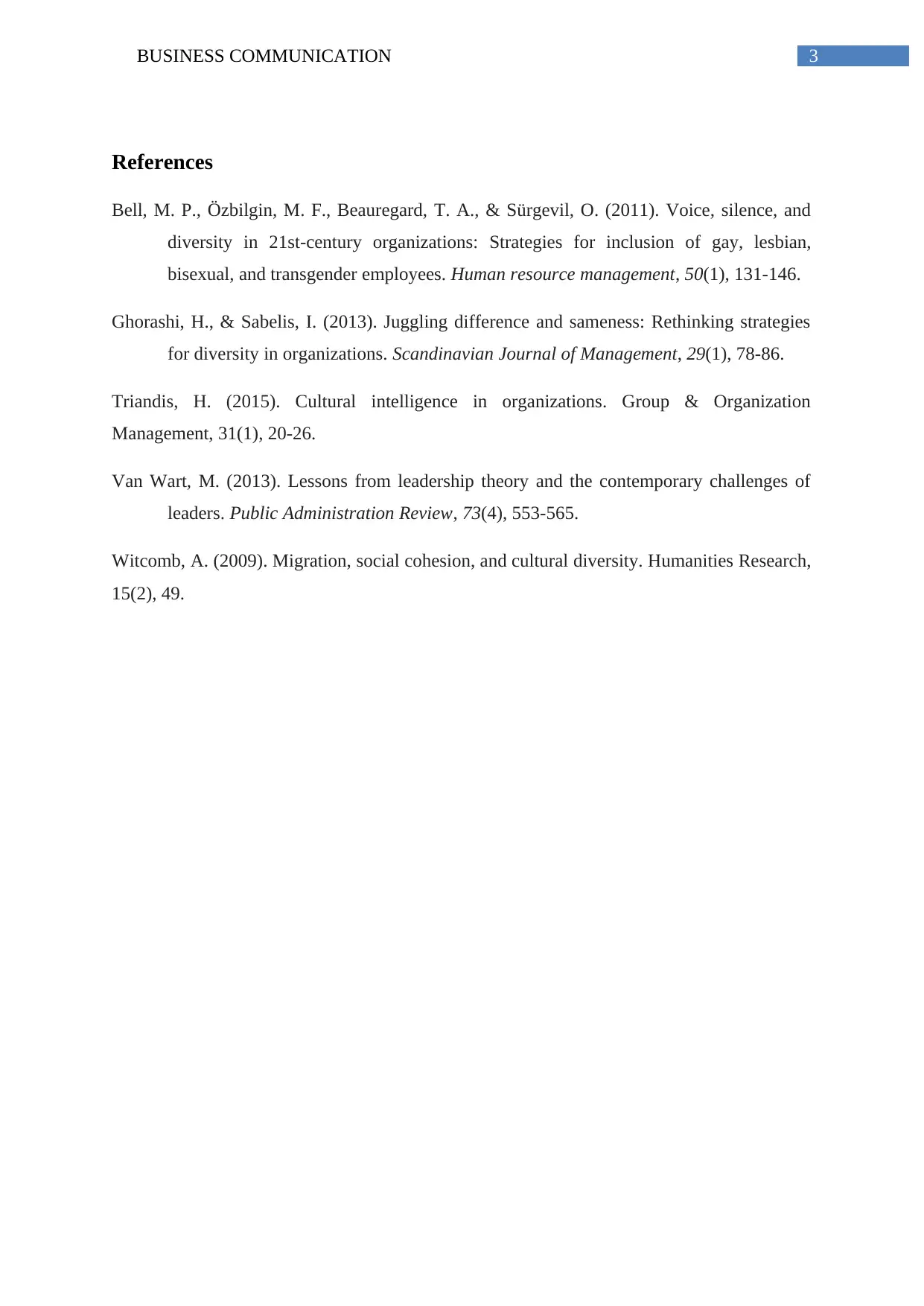University Business Communication Report: Workplace Diversity Argument
VerifiedAdded on 2022/09/21
|4
|514
|24
Report
AI Summary
This report, addressing Assessment 1B for a Business Communication course, examines the critical issue of workplace diversity in contemporary organizations. It begins by acknowledging the unavoidable presence of cultural diversity in modern workplaces due to increased migration, global work opportunities, and the spread of multinational corporations. The report highlights the crucial role of leadership in managing diversity, emphasizing the importance of leaders who can effectively incorporate the similarities and differences among employees from diverse cultural backgrounds. It stresses the significance of inclusion, cultural intelligence, and a commitment to integrating all employees, including those from marginalized communities. The report then explores effective strategies for managing workplace diversity, such as open communication, social cohesion, and conflict management. It also addresses potential challenges, including leaders' own biases or inability to establish effective communication systems. The report uses references to support the arguments presented, with a focus on diversity and leadership within the modern organizational context.
1 out of 4











![[object Object]](/_next/static/media/star-bottom.7253800d.svg)